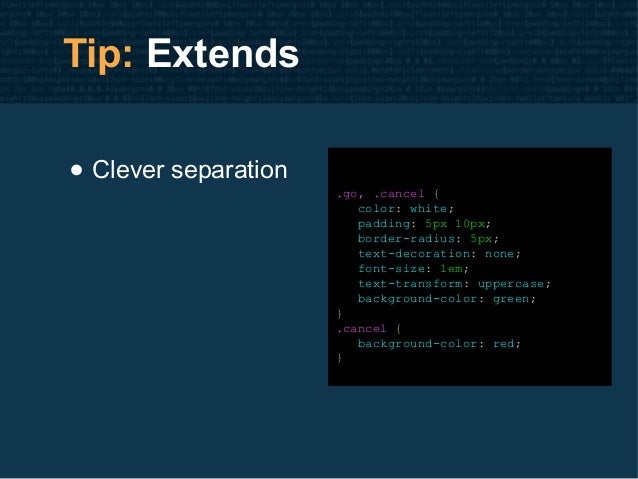
See usage for an example of correct usage. string(.) calls have resolved their returned promises will return a rejected promise. Passing to as part of args will be passed along to teh after and done hooks for proper path adjustment in maps & any plugins that use it. Passing files as part of args will result in getting back combined output CSS just for the listed files and their dependencies. Finalize processing of all added CSS and create combined CSS output file. const Processor = require( processor = new Processor() string(, ) methods, and then use the returned Promise to get access to the results/output. Instantiate a new Processor instance, call it's. Core functionality of modular-css exposed as a JS API. We hope to replace the default CSS transformer and minifier soon, but would like to get feedback first. If you're using Parcel, you can try out Parcel CSS as your CSS transformer, minifier, or both. This architecture provides a foundation for CSS tooling, which can focus on using properties in interesting ways rather than on parsing and interpreting them. For example, implicit default values can be automatically removed, whitespace can be removed where not needed, longhand properties can be merged into shorthands when possible, etc. Since property values are individually interpreted, this approach also enables better minification. This also improves reliability, because each transformer won't parse the value slightly differently, or take shortcuts like using regexes or string replacement, which can lead to bugs. This improves performance because every time a transformer wants to do something with a property, it doesn't need to re-parse it, transform, and stringify it again. Values are interpreted, and implicit default values like background attachment are filled in. Height : LengthPercentage ( Dimension ( Px ( 100.0 ) ) ) , Width : LengthPercentage ( Dimension ( Px ( 50.0 ) ) ) , Y : Length ( Dimension ( Px ( 10.0 ) ) ) , X : Length ( Dimension ( Px ( 20.0 ) ) ) , For example, the AST for a CSS property parsed by PostCSS looks like this: ) ) , This means that each transformer that wants to do something with these values must parse and interpret them itself, leading to duplicate work and inconsistencies.
#Css procssor series
Many other CSS processors treat property values as strings, or an untyped series of tokens. It handles parsing each individual rule and property value, as well as minification, compilation, and printing back to CSS. However, it does not interpret any CSS properties or at rules. This provides a solid foundation, including tokenization and basic parsing. Parcel CSS is based on the cssparser Rust crate, a browser-grade CSS tokenizer created by Mozilla and used in Firefox. It is designed to be efficient in the way it uses memory, including optimizations such as representing vendor prefixes using single byte bit flags, and parsing all CSS properties into structured data rather than representing them as strings that need to be re-parsed each time they are used. Parcel CSS is fast not only because it is written in a native language, but because it was designed from the start with performance in mind.

Size CSSNano ESBuild Parcel CSS 0 KB 40 KB 80 KB 120 KB 160 KB 139.8 KB 156.57 KB 155.89 KB
#Css procssor full
It can produce much smaller output than other tools in many cases thanks to the ability to convert legacy CSS syntax used in many libraries to smaller modern syntax, as well as its full understanding of every individual CSS property.

Performance CSSNano ESBuild Parcel CSS 0ms 150ms 300ms 450ms 600ms 4.6ms 17.41ms 542.96msĮven though it is extremely fast, Parcel CSS does not compromise on size.

This example shows a benchmark that minifies Bootstrap 4, which is about 10,000 lines.
#Css procssor code
It can minify over 2.7 million lines of code per second on a single thread. It is over 100x faster than CSSNano for minification, and over 3x faster than ESBuild. The Rust library is designed as a platform for CSS tooling, with access to fully parsed data structures for all CSS rules, selectors, properties, and values. It can be used with Parcel, as a standalone library from JavaScript or Rust, or wrapped as a plugin within any other tool. In addition to minification, Parcel CSS handles compiling CSS modules, tree shaking, automatically adding and removing vendor prefixes for your browser targets, and transpiling modern CSS features like nesting, logical properties, level 4 color syntax, and much more. Parcel CSS has significantly better performance than existing tools, while also improving minification quality. I'm very excited to announce a new CSS parser, compiler, and minifier written in Rust! Check it out on GitHub, or try a live demo right in your browser. Announcing Parcel CSS: A new CSS parser, compiler, and minifier written in Rust!


 0 kommentar(er)
0 kommentar(er)
